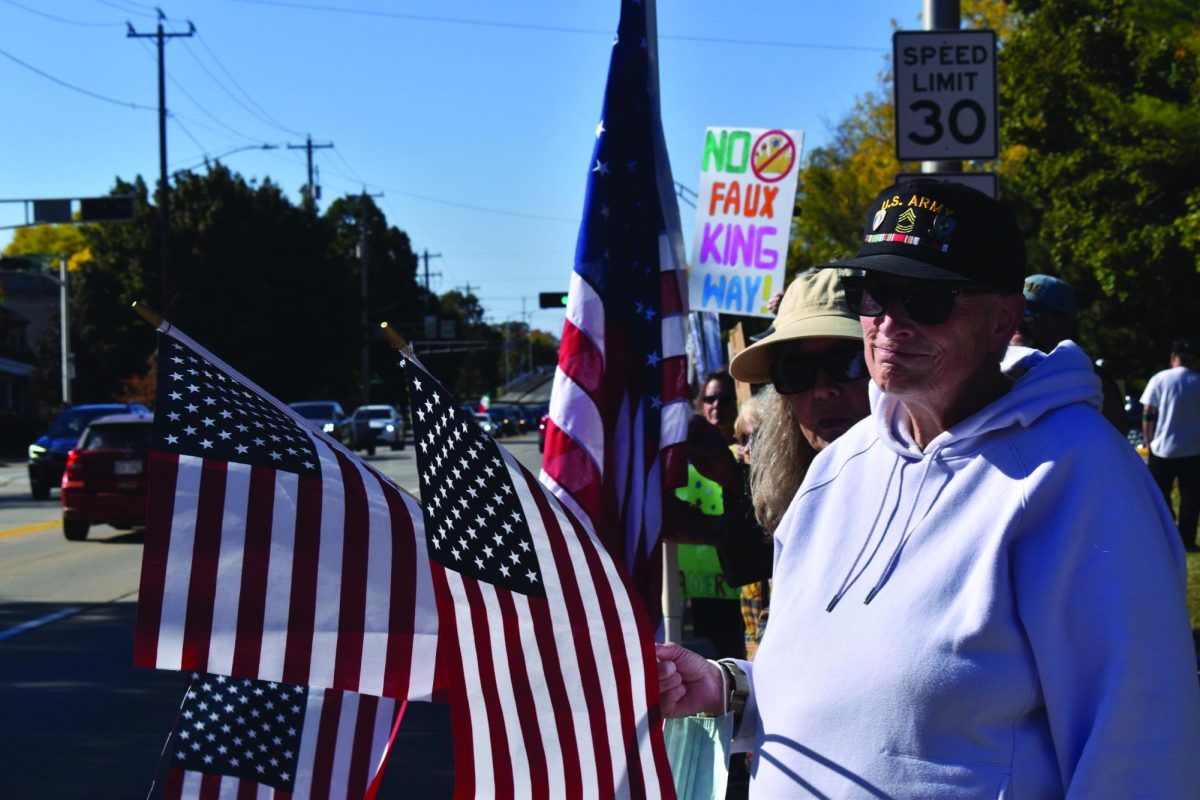UW Oshkosh senior Tre Blohm has been busy digging up fossils in Ukraine as part of his research examining tuberculosis markers in bones.
Blohm traveled to the village of Bilche-Zolote in Ternopil Oblast to work at the Verteba Cave site alongside a digging crew.
Blohm said the idea for his research came from previously reading about tuberculosis in prehistoric times.
“The process of discovering which bones to select for sampling was based on extensive background research on previous work examining prehistoric tuberculosis,” Blohm said. “After a lot of reading, I was able to understand and identify the characteristic osteological indications that suggest the presence of tuberculosis and then searched through our inventory of skeletal material from Ukraine for bones containing these morphological markers.”
Blohm said as soon as the fossils were dug up, it was time to bring them back to Oshkosh to do testing and closer examination.
“Once I selected the bones from Ukraine, I began the background research of determining how to genetically identify the mycobacterial tuberculosis complex in bones,” Blohm said. “This required reading and understanding of specific genetic markers and creation of complementary primers to amplify the specific sequence.”
Blohm said the next step included working with the specific DNA structures in the fossils and studying samples.
“Then after obtaining all the information and the supplies, I began the lab work of extracting the DNA by drilling into bone samples and collecting the powder, amplification of DNA using polymerase chain reaction and identification through gel electrophoresis,” Blohm said.
Blohm said some challenges he faced during his research were some of the handling techniques to extract the DNA and trying to find balance for doing his actual research while also working.
“Some challenges I faced were collecting the bone powder,” Blohm said. “I underestimated how difficult it is to carefully drill into bone.
Getting the initial hole started was more difficult than expected, due to the drill wanting to skip around.”
Jordan Karsten, an anthropology professor at UWO, was part of the team that helped with Blohm’s research.
“I’ve been working at the archaeological site of Verteba Cave since 2008, working on studying the ancient skeletons that were buried there by the Tripolye archaeological culture, one of the first groups of farmers in Eastern Europe,” Karsten said. “Previous research at Verteba on human skeletons has shown that this population suffered from physiological stress, especially compared to the prehistoric hunter-gatherers that occupied Ukraine prior to the arrival of the Tripolye.”
Karsten said the lack of data to back up why the prehistoric people were so unfit is what gave inspiration for Blohm’s research.
“Although that previous research determined the Tripolye weren’t very healthy, we had not yet identified any specific diseases that may have contributed to their condition,” Karsten said. “That led us to come up with Tre’s research project, trying to determine if these ancient farmers suffered from tuberculosis.”
Karsten said Blohm’s research will help not only fellow anthropologists who study human history, but also medical professionals who work with diseases of today.
“Tre was able to conclusively document that by extracting the DNA of the pathogen from the ancient bones,” Karsten said. “Such data allows us to document how cultural changes have altered human health, track the evolution of a disease agent that still plagues humanity and reconstruct what life was like for ancient Europeans.”
Karsten said the physical labor aspect of finding different sites to dig at as well as preparing the sites were difficult challenges he faced.
“The site of Verteba Cave is located far from the main cities in Ukraine, so we spent a few days traveling to get there,” Karsten said.
“Once we are at Verteba, some of our time is spent exploring hard to access points as we survey the cave for new archaeological sites.
That includes squeezing through very tight cracks and clambering over obstacles. Other time is devoted to slowly removing the soil at sites in order to expose the human remains, animal bones and artifacts that are found in the deposits.”
Karsten said his favorite part of the research has been being able to combine his love for studying human history while also involving his students in the process.
“My favorite aspect of the research is getting to involve UWO students in the process,” Karsten said. “For example, helping students like Tre develop into research scientists is a real highlight. When hard-working students, like Tre, complete large projects, I get to learn a ton about humanity’s past.”
Blohm said his favorite part of his research was the whole process in general, beginning with going to Ukraine to obtain his fossil samples to bringing them back to try and further the information they have on the past.
“The whole research project has been one massive, non-stop learning process and has allowed me to gain a lifetime of memories in Ukraine as well as the unforgettable feeling of working with ancient remains and helping increase our understanding of the past,” Blohm said.








